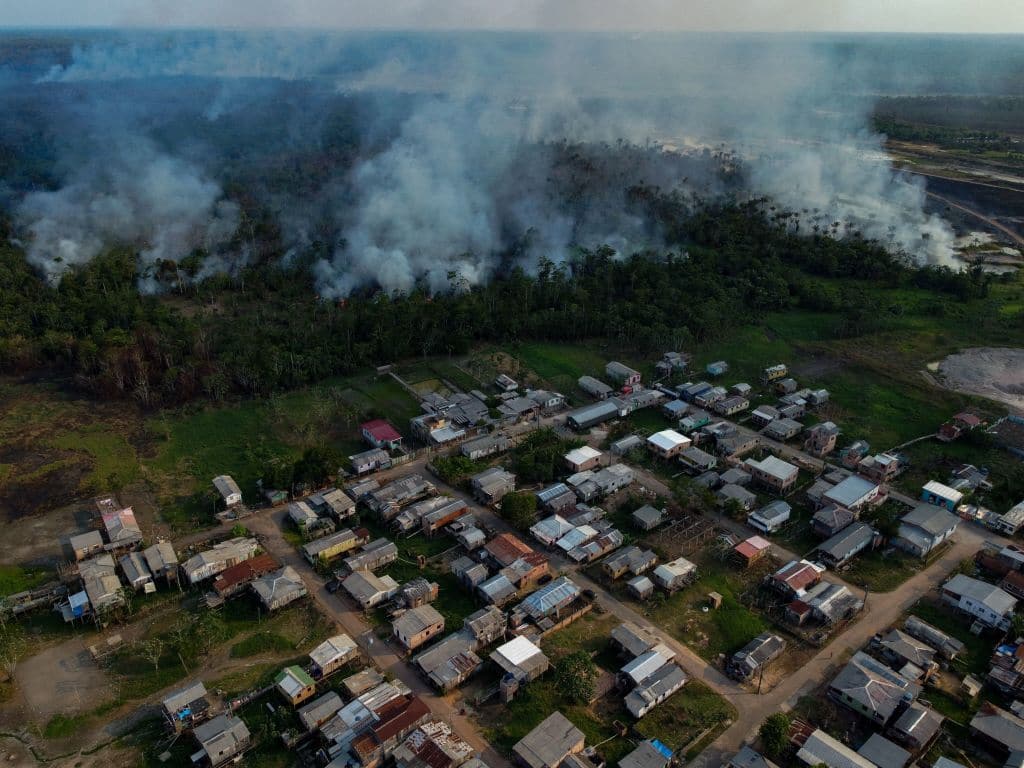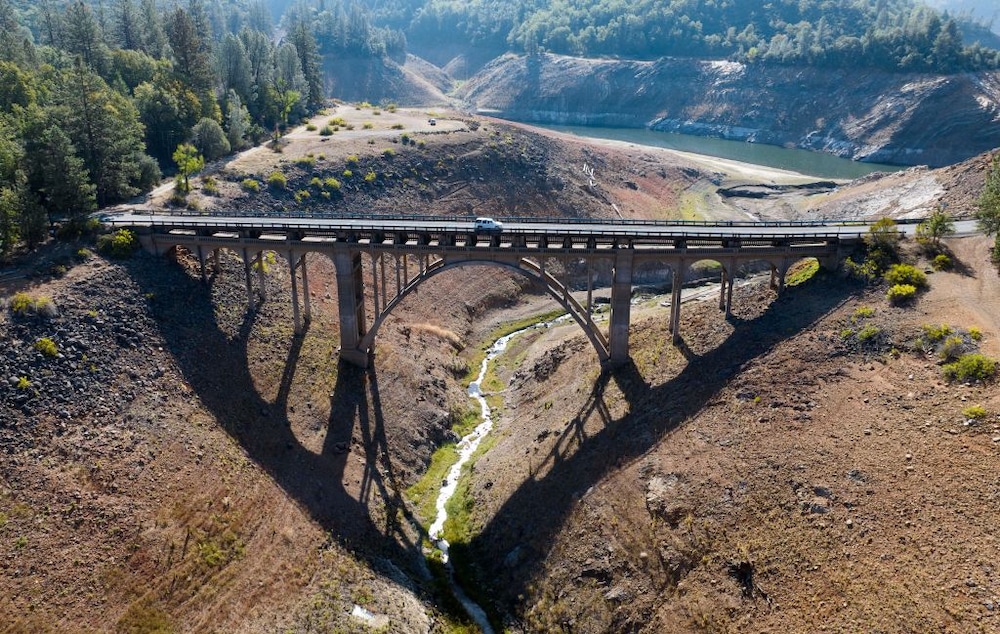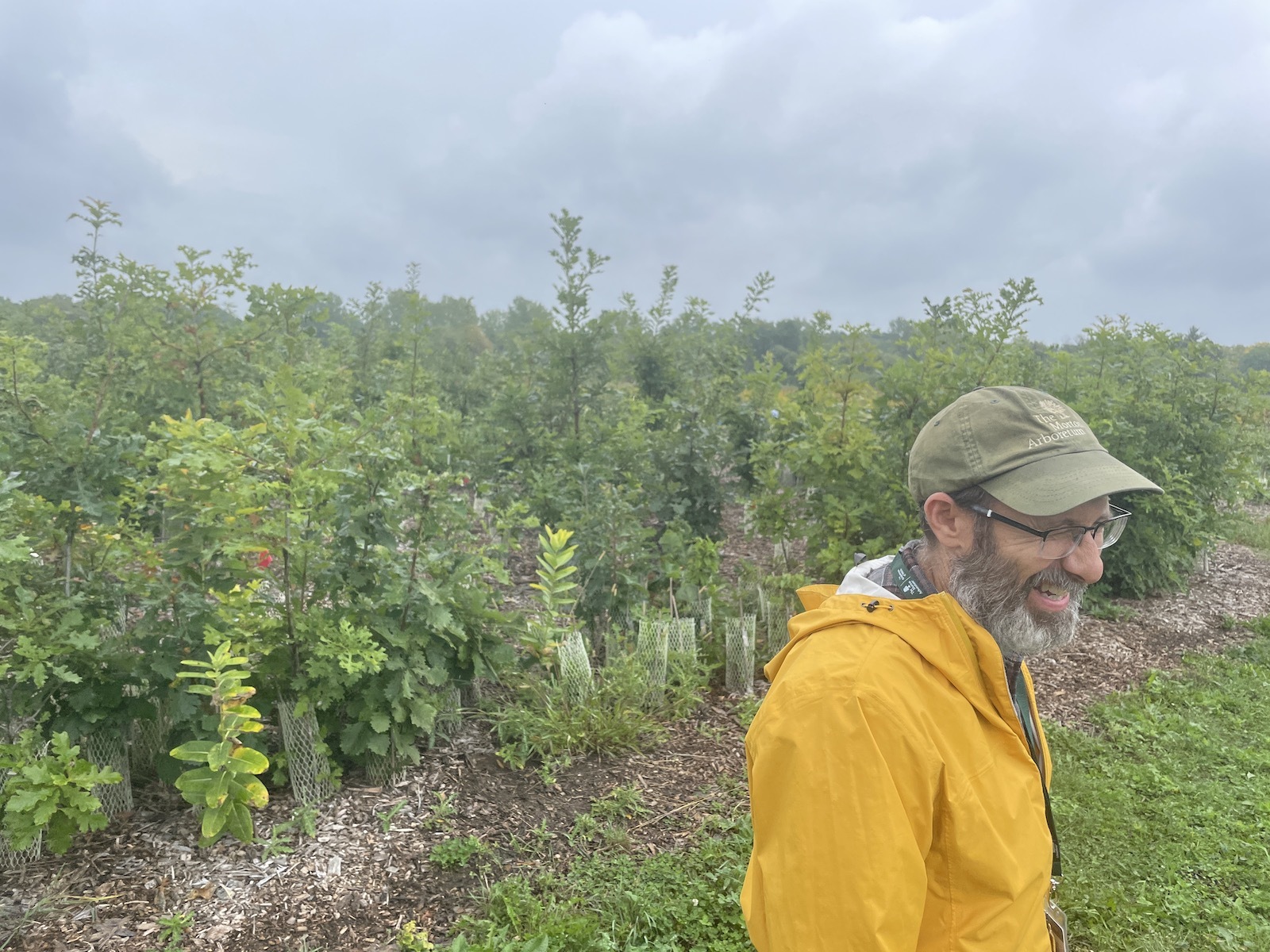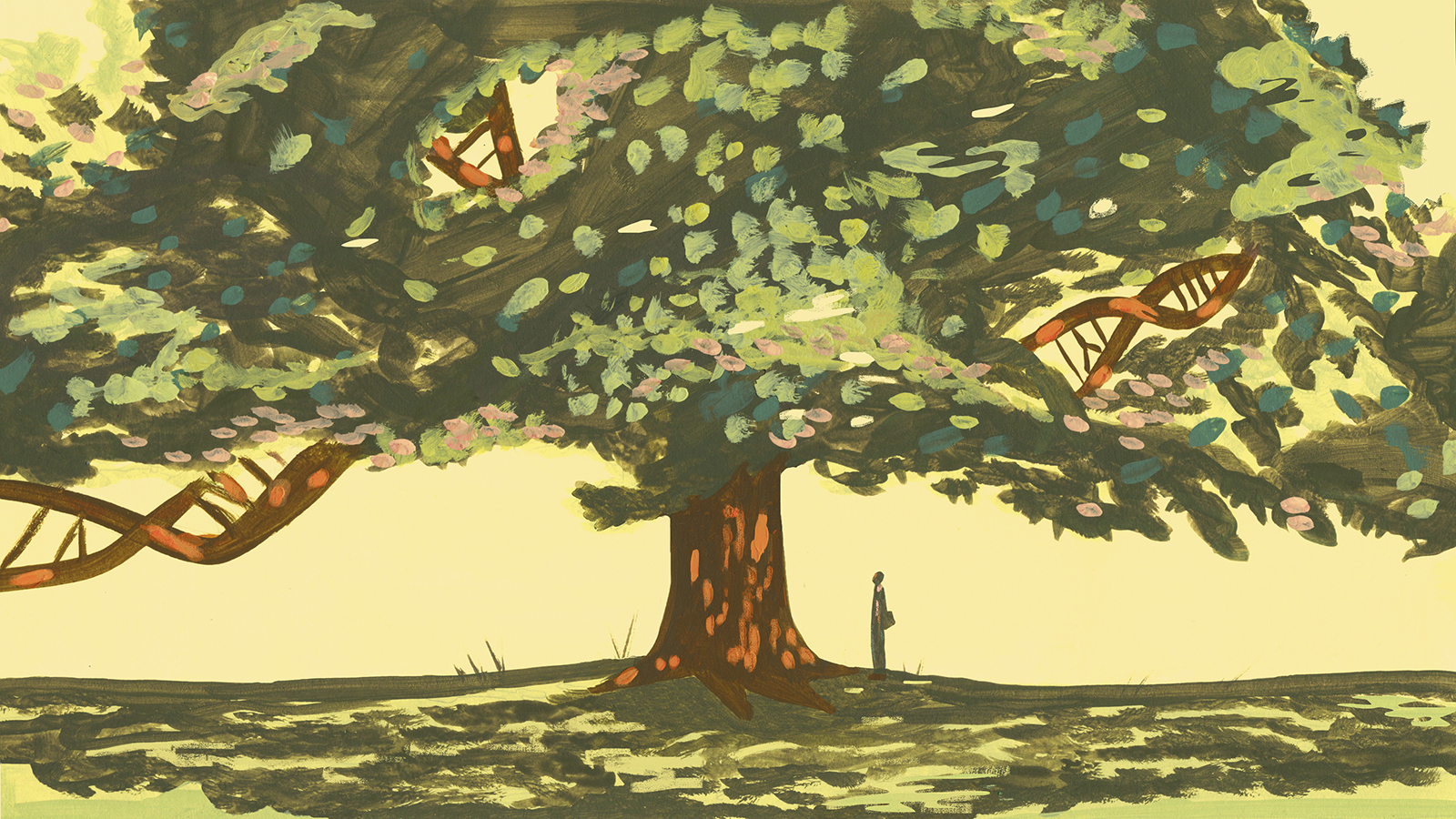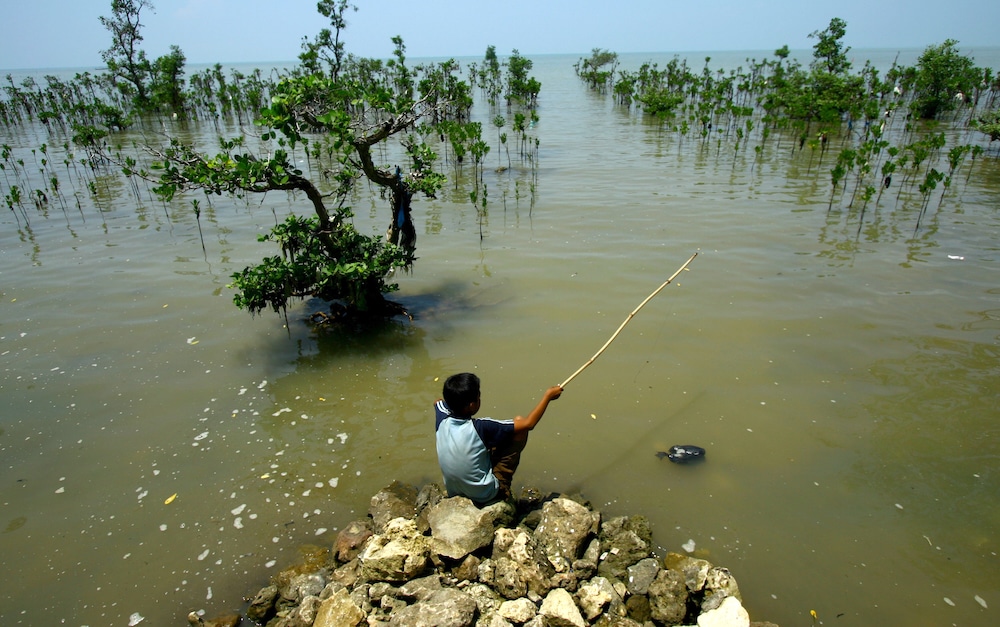
Quick Key Facts
- Blue carbon is the term for carbon that is captured by the world’s ocean and coastal ecosystems. Through sequestration, it can reduce greenhouse gases in the atmosphere.
- Coastal blue carbon is the carbon captured by living coastal and marine organisms and stored in coastal ecosystems through salt marshes, mangroves, and seagrass beds which both sequester and store carbon.
- Mangroves and salt marshes remove carbon from the atmosphere at a rate 10 times greater than tropical forests, and store three to five times more carbon per acre.
- Seagrass meadows account for just 0.1% of the world’s seafloor but store 11% of the organic carbon buried in the ocean.
- Giant kelp also locks away vast amounts of CO2 in ocean sediments.
- While these habitats can contribute to climate change mitigation, if they are destroyed or lost then carbon can be released back into the atmosphere. Currently, coastal habitats around the world are being lost at a rapid rate, largely due to coastal development for housing, ports, and commercial facilities.
- There are currently various efforts underway to protect and restore these ecosystems.
- The U.S. was the first nation to include blue carbon in its national greenhouse gas emissions inventory to incentivize restoration efforts through carbon-trading financial markets.
What Is Blue Carbon?
Carbon dioxide is one of the leading greenhouse gas emissions causing climate change, with human activities like the extraction and burning of fossil fuels having raised the atmosphere’s CO2 content by 50% in under 200 years, according to scientists at NOAA.
As many look for solutions to sequester more carbon, studies have shown that one of the best carbon sinks we have is in the ocean, particularly coastal ecosystems.
In 2009, the term “blue carbon” was coined in a UN report to encompass these ecosystems’ large contribution to global carbon sequestration. Now that it has gained more traction globally, international agreements about climate change focus more on the possibilities of coastal blue carbon and its ability to help curb climate change.

Blue Carbon and the Environment
According to the U.S. Environmental Protection Agency, carbon dioxide accounts for 76% of greenhouse gas emissions, 65% of which comes from the burning of fossil fuels and industrial processes. Since the middle of the 20th century, annual emissions from burning fossil fuels have increased from close to 11 billion tons of carbon dioxide per year in the 1960s to an estimated 36.6 billion tons in 2022.
While playing a vital role in living organisms and ecosystems, as well as regulating the Earth’s temperature that makes life on Earth possible, carbon dioxide emissions generated by humans have been altering the chemistry of the global temperature.
The ocean absorbs around 30% of the carbon dioxide in the atmosphere. As it increases in the atmosphere from human activity and changing land use, like deforestation, the amount of carbon dioxide absorbed by the seawater also increases, which leads to ocean acidification.
Ocean acidification, which is sometimes referred to as the “osteoporosis of the sea,” is when carbon dioxide dissolves in seawater as carbonic acid, which threatens the chemical balance of the water and makes it difficult for marine life to build shells and skeletons. It also causes harmful algal species to produce more toxins that could be harmful to humans.
Marine ecosystems, such as blue carbon, can help contribute to climate change mitigation and ocean acidification by sequestering excess carbon from the atmosphere.
The Intergovernmental Panel on Climate Change (IPCC) focuses on rooted vegetation in the coastal zones such as mangroves, tidal marshes and seagrasses, which have high carbon burial rates, and accumulate carbon in their soils and sediments. They also provide other benefits like storm protection, water quality improvement, and benefiting biodiversity and fisheries.
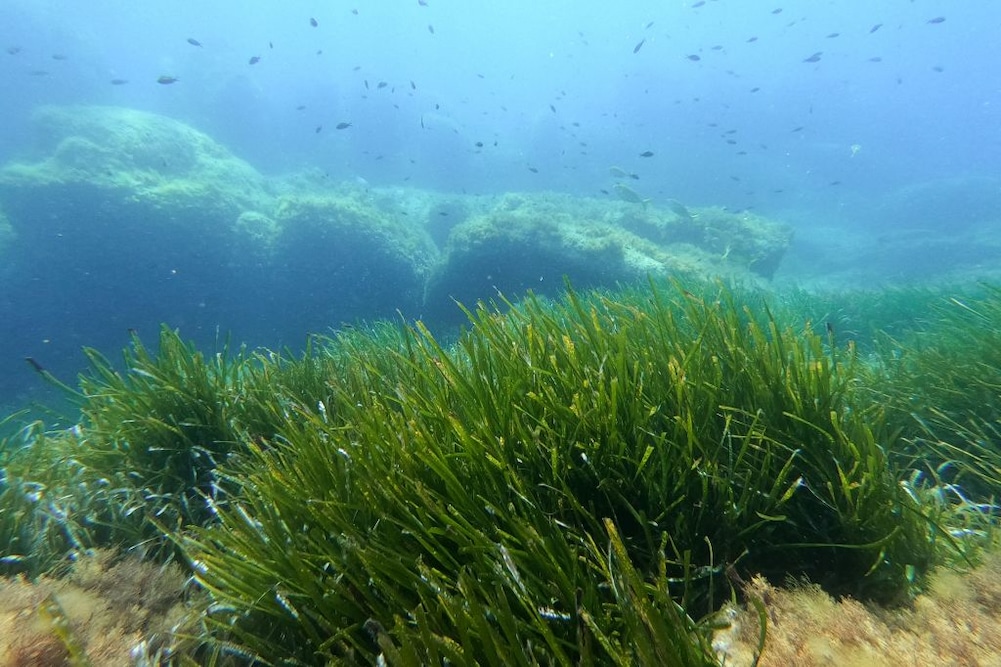
Mangroves, salt marshes, and seagrasses are found along the coastlines of every continent except Antarctica.
One of the roadblocks happens when blue carbon ecosystems are damaged or destroyed, causing the carbon they’ve been storing over long periods of time to be released into the atmosphere. This damage comes from pollution, development, overexploitation of resources, recreational activities, and other sources.
Luckily, there are several initiatives working to restore these ecosystems.
Mangroves
Mangroves are tropical shrubs and trees that grow mainly in coastal salty waters and can tolerate being partly submerged in tides, thriving in low-oxygen, high saline environments.
Mangroves not only provide critical marine habitat, but mangrove forests serve as natural buffers against storm surges, benefit shellfish and fish, provide wood and construction material, hold traditional medicine, and carry spiritual and cultural value for many coastal communities.
Mangroves also hold as much carbon as the annual emissions of 90,000 cars in one square mile.
Mangrove forests can be found on the coasts of more than 100 tropical and subtropical countries, totaling more than 54,000 square miles.
According to researchers, in 2014 mangroves mitigated greater than 1% of national fossil fuel emissions for countries such as Bangladesh, Colombia and Nigeria.

However, mangroves are being lost at a rate of 1-2% per year. Experts estimate that carbon emissions from mangrove deforestation account for up to 10% of emissions from deforestation globally, despite covering just 0.7% of land coverage.
One of the main drivers for mangrove loss is also aquaculture production leading to large-scale conversions of mangroves areas into fish and shrimp ponds.
A study conducted by a team of scientists at Global Mangrove Watch, who analyzed changes in mangrove ecosystems in the world from 1996-2010, found 38% of mangrove forests observed in the study are affected by human activity in Southeast Asia. The area is home to 33.8% of the world’s mangroves, as well as 90% of the world’s aquaculture, making it the worst affected region.
This led many coastal communities who rely on them for their economic livelihoods through fishing and timber, as well as disaster mitigation, to figure out how to balance aquaculture with conservation efforts.
According to Eco Business, people in North Sumatra conserve mangroves at the center of their shrimp farms and plant oil palm along the borders.
Seagrass
Seventy-two different species of seagrass exist submerged in shallow waters around the world.
Integral to marine biodiversity, seagrass absorbs harmful nutrients, works as an acidification buffer, protects coastal areas from storms, and hosts an array of sealife, 20% of which contributes to the world’s fisheries.

Despite covering only 1% of the ocean floor, seagrass meadows are effective carbon sinks storing up to 18% of the ocean’s carbon.
Seagrass is also one of the least protected coastal ecosystems, with only 26% of recorded meadows falling within marine protected areas. Since the 1930s, 30% have been lost globally with an estimated 7% disappearing every year due to threats such as urban, industrial, and agricultural run-off, dredging, coastal development, unregulated boating and fishing, as well as climate change.
Salt Marshes
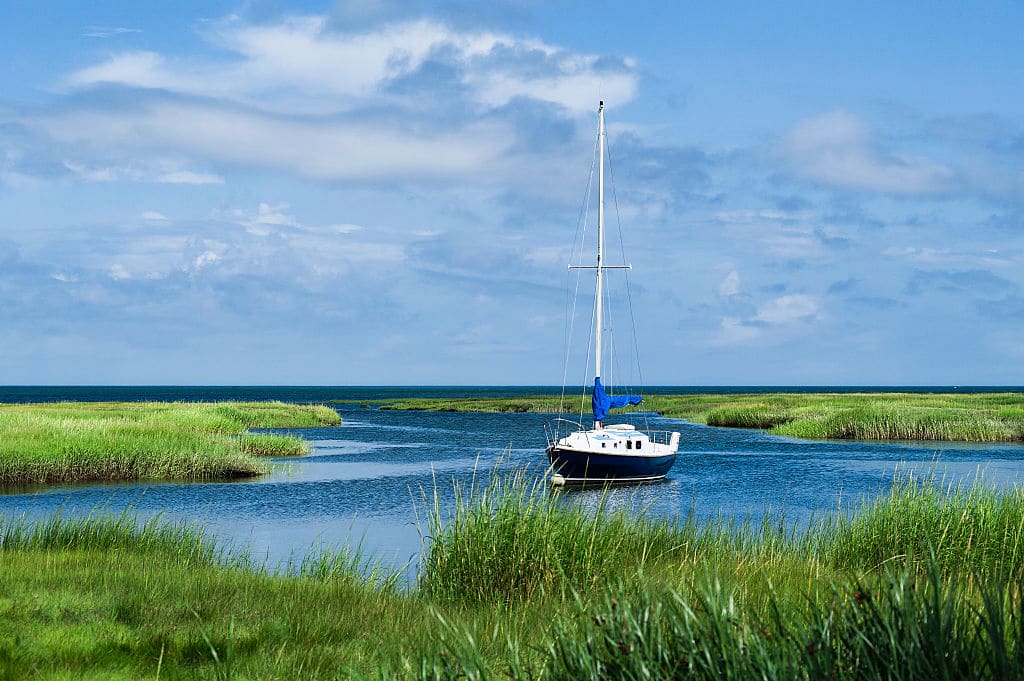
Salt marshes are coastal wetlands that are flooded and drained by saltwater brought in by the changing tides. They are made of deep mud and peat, which is composed of decomposing plant matter. They occur worldwide along shorelines and provide food, refuge, and nursery habitat for more than 75% of fisheries, and also protect shorelines from erosion, flooding through absorption, and protect water quality by filtering runoff. They also provide habitats for native birds and migratory fish.
Salt marshes can sequester approximately 1,940 pounds of carbon per acre per year. However, according to a study published in Nature, between the years 2000 and 2019, 561 square miles of salt marshes were lost globally, resulting in 16.3 million metric tons of carbon emissions.
Besides the losses contributing to climate change, climate change is one of the greatest threats to salt marshes. Other threats are coastal erosion, mangrove encroachment, invasive species, and eutrophication, which involves excessive nutrients that cause harmful algal blooms toxic to humans, fish, and seagrass in fish habitats and are a result of runoff from agriculture fertilizer, sewage, industrial waste, the livestock industry, and aquaculture.
Another reason for loss is conversion to development. Historically people viewed marshes as unimportant wastelands, and converted that land into construction sites and farmland.
A study by Humboldt University in California found 481 salt marshes in Humboldt Bay in the City of Arcata, and concluded after analyzing more than 1800 maps over time that around 1400 acres of salt marshes were lost due to diking and land conversion for agricultural purposes. The current lot of salt marshes sequestered 396 metric tons of carbon per year, but the study determined that if lands were to be restored back to salt marshes, around 1170 metric tons would be sequestered annually.
Kelp Forests

Kelp forests in the ocean are also able to capture and sequester carbon, and at a rate that is said to be faster than land forests.
Kelp is a type of brown algae, or seaweed, that through photosynthesis absorbs carbon dioxide. When it dies, most of what was stored is locked up in its tissues and transported to the ocean floor. A study reported that Australia’s Great Southern Reef sequesters 30% of all of Australia’s blue carbon, and 3% globally. According to another report from the BBC, seaweed on the whole is said to sequester nearly 200 million tons of carbon dioxide a year.
Kelp forests are also at risk because of the climate crisis, overfishing, invasions of hungry sea urchins, and pollution. However, much like the above coastal ecosystems, restoration efforts are underway.
Blue Carbon Conservation and Restoration Efforts
While some of those statistics are grim, there are efforts happening globally to conserve and restore many of these ecosystems. Here are some of them:
An organization comprised of Conservation International, the International Union for Conservation of Nature, and the Intergovernmental Oceanographic Commission of UNESCO, they have developed projects in Indonesia and Australia and seek to build a foundation of knowledge about these ecosystems through the Blue Carbon Scientific Working Group.
Through the Initiative, they’ve been working with partners from national governments, research institutions, nongovernmental organizations, and coastal communities around the world to provide global and national policy expertise to enable more initiatives.
Through the campaign She is the Answer, this international NGO aids communities’ resilience to climate change through empowering local women. They created a mangrove rewilding project in Kampot, Cambodia, with the goal of planting more than 100,000 mangrove saplings along the shoreline. The women have also set up climate-adaptive floating gardens and schools where younger generations can learn about climate change and resilience.
The Mangrove Restoration Project
Nigeria is the location of the most degraded mangroves globally. In 2020, the government launched this community-led project aiming to increase mangroves by 25%.
This project is restoring nearly 40 acres of salt marshes and other coastal habitats at the Great Meadow marsh in Stewart B. McKinney National Wildlife Refuge in Connecticut. The project is led by NOAA and its partners.
South Bay Salt Pond Restoration Project
The largest wetland restoration project on the West Coast, this San Francisco project will restore more than 15,000 acres of industrial salt ponds into tidal wetlands. Launched in 2003 as a 50-year project, it has made considerable progress with more than 3000 acres restored so far.
The Seagrass Restoration Project
For the last twenty years, the Virginia Institute of Marine Sciences and The Nature Conservancy successfully created 3612 hectares of new seagrass beds by planting 70 million seeds of eelgrass off of Virginia’s Eastern Shore.
Blue Carbon and the Carbon Environment
In 2021, blue carbon emerged as part of the controversial carbon market, where companies or individuals offset their own emissions by paying another company or organization that works to reduce the total amount of carbon produced in the world. These carbon offsets are traded through international brokers, retailers and trading platforms.
It remains controversial for a variety of reasons, one of which is that while some believe this improves the environment, others claim it does not tackle the root cause. Some also say it leads to greenwashing.
Verra, a Washington, DC-based nonprofit that regulates the carbon market, recently credited a current project to reforest and conserve a mangrove swamp in Sinaloa, Mexico. It estimates that the project reduces 3,123,863 tons of atmospheric carbon each year through planting new trees and the maintenance of existing plants.
More controversy surrounds existing vegetation being part of the carbon offset process and giving credits for projects that aren’t in danger of destruction. For example, the Nature Conservancy has helped develop several projects that generate credits for corporations like Walt Disney and J.P. Morgan, where trees that are protected are not in danger of deforestation.
Verra was also recently investigated by The Guardian, which found that 90% of their rainforest carbon offsets were “worthless” and that only a handful showed evidence of deforestation reduction, with further analysis indicating that 94% of the credits had no benefit to the climate.
Still some are benefiting with projects that are working, like coastal village communities in Kenya who are the first blue carbon credit initiative in the world to enhance communities, according to the UN.
Mikoko Pamoja is a small-scale carbon offset facility that seeks to provide incentives for mangrove restoration; promote conservation and sustainability; mitigate climate change; conserve biodiversity; and enhance community livelihood. The project conserves 117 hectares of mangroves and over three years has restored 8000 mangroves with the help of local community, government institutions, local schools, and volunteers.
Policy
While the U.S. Congress passed the Coastal Zones Act in 1972 – which was designed to help protect wetlands, floodplains, estuaries, beaches, dunes, barrier islands, and coral reefs, as well as the fish and wildlife using those habitats – and states like Texas passed legal protections for seagrass, it appears blue carbon-specific large scale policy is necessary.
However, policy frameworks have been started in some places globally.
The UN’s International Union for Conservation of Nature released a policy framework for blue carbon ecosystems with a goal to align across global policy processes to enhance, restore, and sustain these ecosystems.
In September 2022, the Global Mangrove Alliance released a report which was created in collaboration with more than 100 mangrove science, finance, and policy experts from around the world to set out a pathway for the way ahead to finance more mangrove action.
Other countries have committed to making changes.
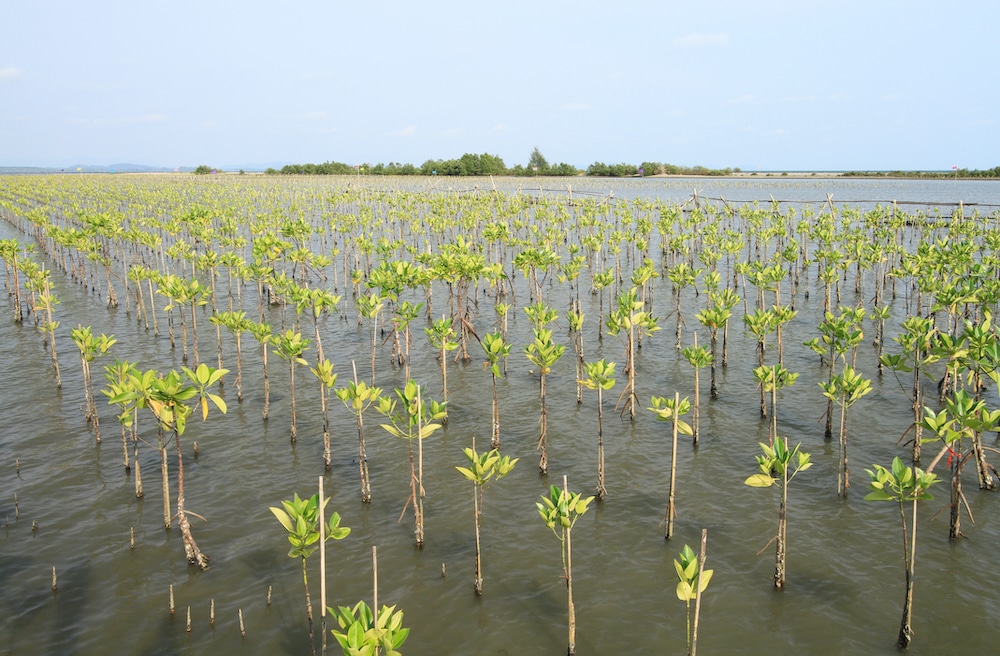
At 2021’s COP26 climate conference, Belize announced it would double the area of protected mangroves, halt net loss of coastal wetland habitat by 2025, and restore 4000 hectares by 2030. Costa Rica committed to protecting all of its coastal wetlands by 2025, and the Seychelles has committed to completely protecting its mangroves and seagrasses by 2030.
The government of Indonesia has also been working to protect mangroves by introducing spatial plans, a system for resolving land use conflicts and balancing environmental and economic considerations by creating zones for specific uses. The country also made substantial progress in expanding Marine Protected Areas to more than 23 million hectares. Indonesias has also set an ambitious target of rehabilitating 600,000 hectares of mangroves by 2024.
Takeaway
While systemic changes are needed throughout industries that contribute to atmospheric carbon dioxide, coastal ecosystems offer many benefits for climate change mitigation.
Though there have been significant losses to these habitats over the years, mostly due to human activity, more restoration efforts are underway, which will not only benefit the environment in terms of carbon sequestration, but also help restore biodiversity and enhance communities.

The post Blue Carbon 101: Everything You Need to Know appeared first on EcoWatch.


